Strawberries are a lot of advantages: berries ripen early, they are useful for health, fragrant, juicy, tasty. This culture is impressive annual harres, adapts to the conditions of the medium in which it turned out to be quickly multiplied. In order for the cultivation of garden strawberries to be successful, we must successfully choose a variety for your site and know the peculiarities of the cultivation of this culture.
Brief feature and description of garden strawberries
Fragaria is a generic name, which gave botany strawberries. And with Latin it translates as "fragrant." Of all the types of this kind, two are more familiar to us:
- Forest strawberries - her little berries are collected from low bushes in the second half of June in forests (deciduous, coniferous) and on solar pools.
- Sadovaya (Pineapple, Large) Strawberry - Her ruddy berries ripen on our beds. Its varieties are derived from a hybrid that managed to create with the participation of strawberries Chilean and Virgin.
Garden strawberries - multi-year culture. In the surface layer of the soil is its rhizome and many prescript roots. A more active root system develops in spring and after fruiting is completed. The above-ground part of this berry culture is represented by annual increments, they are called horns. Their length is 10-15 millimeters. Each such a horror develops in the future leaves, the escape on which the top inflorescence is formed in the form of a "shield" and the cords-shaped mustache are peeling. When the period of fruiting is completed, the floral escape dries and dies, the development of this horn stops. But new horns are formed from the stubby kidneys. For three years, the number of horns increases, then the bush ages, the horns cease to be formed. In the spring, the treasured leaves of homemakers are growing. When the harvest is assembled, the second splash of their growth begins. And if during this period the leaves are sharply formed, this positively affects the laying of so-called flowering kidneys, the yield of the next season depends on their quantity. After about 70 days, these leaves gradually die. In September, plants grow new leaves, they will go to wintering with them. This culture normally winters only if it protects good snow cover (the thickness of the snow layer is at least 25-30 centimeters). If there is no snow, and the temperature is below 10 degrees, then the top kidneys and leaf plates are frozen. The mustache has the most actively growing in July and until August 15. The flower in the plant consists of five white petals, many stamens and pestles. Obrowly flowers, they are peculiar to self-pollination. A false berry grows out of the scaled color, and small seeds (nuts) that are on its surface are the true fruits of strawberries. Juicy berries, large, their coloring is predominantly red or white with a pink "barrel", and "nuts" on the surface are browned. The form of berries is diverse: conical, rounded, oval, cuboid, spindle-shaped, trunnoconal, egg-shaped, combidal.
It is believed that it is the fragrance that helped the strawberry to become popular, and then a juiciency and taste was assessed. Scientist managed to detect more than fifty aromatic compounds in the strawberry, capable of providing almost a magical effect on the human body. This delicacy takes away from despondency, depressed, raises the mood, begets and heals. To remove negative consequences after the stressful situation of the Doctor advise you to eat ruddy fresh berries in the amount of at least 150 grams. Berries strengthen the body, because they have a lot of zinc, iron, copper, manganese, iodine, cobalt, group vitamins B, carotene, ascorbins, nicotinees, routine. A strawberry is especially useful for anemia, sclerosis of vessels, hypertension, other heart diseases, kidney concretions, skin rashes, eczema, periodontal disease, ethnicity, organism crossing, sexual disorders.
Variety of varieties of strawberry pineapple (garden)
In the time of Catherine II, Victoria variety was considered the best garden strawberry. Breeders annually replenish a list of varieties that differ in the form of berries, sizes, taste quality, winter hardiness, the timing of ripening fruit, color of petals. Wonderful varieties are derived in Canada, Germany, the Netherlands, the United Kingdom, Russia. On different soils, in different conditions of content, the number of berries, their size and taste of the same variety are very different. Therefore, when choosing a variety, prefer prefer to those who have shown well in your area. Pay attention to the characterization of their winter hardiness, disease resistance. And it is better if several varieties are tested on the site. Over time, you will understand which varieties must be multiplied.
Early gather berries from homemakers of garden varieties: "Magician", "Honey", "Kalist Demon", "Darenka", "Zarya", "Sudarushka", "Marishka", "Zephyr", "Kama".
Middle ripening varieties: Cinderella, "First grader", "Fairy", "Orlets", "Kent", "Georna", "Wonderful", "Dukat", "Festival", "Marshal", "Marmalade".
The berries in varieties ripen: "Bereginy", "Alpha", "Bogota", "Zenga Zeengan", "Pandora", "Troitskaya", "Black Prince".
Removable varieties are valuable in that they can bloom continuously and for a long time, so the berries on such bushes are typked from June and until the end of September, and in the southern regions - from May and to October inclusive. Such bushes have more horns, leaves and inflorescences, therefore the crop is rich. It can be said that the founder of most of these varieties was "Louis Gauthier." Modern varieties with repair: "World Delicacy (or Debut)", "Geneva", "Forest Tale", "Lyubava", "Mount Everest", "Home Delicacy".
Want to admire large berries? Then it is worth trying to plant a variety: "Georna", "Marshal", "Chamori Tourusi", "Queen", "Czech Beauty", "Kiss Nellis", "Great Britain", "Gigantella Maxim", "Primel".
On the windowsill, you can try to grow varieties capable of fruiting year-round, for example, "temptation", "home delicacy".
Popular from dacnifice variety:
- "Cinderella" - on compact bushes, the berries of the stuporical shape are growing, in which the flesh is dense, reddish-orange, the taste of sour-sweet. The variety of yields, winter films, rarely appears mildew, but minus - the possibility of lesion by gray rot.
- "Fairy" - first on the bush for which large leaves are characterized, berries are blushing, similar to scallops, but the shape of the berry of the second harvest is rounded. The taste of them closer to the acidic. Weighing minuses: exposure to strawberry ticks and mildew.
- Giant Maxim - Powerful bushes with large leaves with thick mustes and with a well-grown root system. Berries are large (from 60 to 125 grams), with a dense fragrant flesh, very sweet, even if the weather is rainy. The variety derived in Holland needs special care, otherwise it will suffer from rot, ticks and slugs.
- "Honey" is resistant to frosts, many diseases, continues to give berries, even if the weather is bad. Large berries saturated raspberry coloring.
- "Calistevelmon" - large berries having a cone shape and dense pulp ripen on a sprawler. Pluses of plants: large yields and resistance to infections.
- Marshmallow - powerful bushes showing winter hardiness and sustainability for dry periods. Berries gives large, their form rounded-conical, slightly ribbed, coloring dark burgundy, fragrance pleasant, nutmeg.
- "Valen" - the conical berries on the bush ripen very early, they have red color and a dense pulp. Vertine variety, led in Russia.
- Eros - a variety giving very large fruits, brilliant, orange-red color, with the presence of strawberry flavor forests. The grade shows resistance to diseases, derived in England.
Saplings Sadovaya seedlings can be asked for their neighbors in the country, colleagues at work, friends or purchase them in the market, in nurseries or horticultural centers.
Planting garden strawberries
Experienced gardeners believe that the most successful time to accommodate strawberries on the garden is August and September. In this case, the seedlings before the arrival of frosts are well rooted and even the leaf mass will be built and go with her in the winter. In early June, early grades will already show you their berries. If the seedlings in your hands appeared at another time, then you will have to put them in the spring or in the first months of summer. It is better for those seedlings that are in cups or pots, that is, their roots are closed, develop in the ground. Preferences give the seedlings of garden strawberries, which has already developed two or three sheets. No traces of disease should not be on them. An hour before moving to bed, such seedlings are with a solution that contributes to the development of roots (for example, "corneser"). If you chose seedlings that are open to the root system, then first place the roots for 10 hours in the container, where to pour the liter of the water and thread 3 droplets "HB-101" (biostimulator). If there is no place in your reserves, then use Kornvin.
Speak one plot in advance that you will assign under the strawberries. At the same time, diligently and painstakingly choose from the soil the roots of dandelion, drinking, horse sorrel that you can come across. It is better to settle the strawberries where dill, onions, legumes, garlic, velyts, lupine, oats were recently planted. But in the territory where tomatoes and potatoes, a berry culture, do not have a berry culture. In advance to this area to improve the soil per square meter, make at least 6 kilograms of reworked manure (or earth from the compost), 25 grams of potash fertilizers, 60 grams of superphosphate.
Attention! Garden strawberry does not like when fresh manure, chlorine compounds and the overabundance of mineral fertilizers are scattered under it.
Between plants in the row, make a distance of at least 30 centimeters. If in the description of the variety it is said that he will give a powerful bush, then this distance must be increased (up to 40-50 centimeters). Between these rows, the distance should be at least 50 centimeters. There are other landing material location schemes. The main thing is that the bushes have enough space to actively develop. Yes, and you should be convenient to care for them.
Make a hole, send the scrolls in it and a handful of ash, mix them. Then on the hilly, straighten the roots of seedlings and sprinkle their ground so that the root cake is located at the ground level. Pour your plants, pay attention to the "heart" (this is a point of growth) did not beat the soil, and the roots did not bargain.
Recommendations for further care for garden strawberries
The first ten days from the moment you placed strawberry seedlings on the beds, it is necessary to ensure that the soil is wet. Perhaps to water these days they will have daily. Then they accurately come true. How to help bushes further develop and well fruit?
- Weeding - Do not allow your strawberry beds to bother weed herbs, because they will take water and nutrients in berry crops. And still weeds contribute to the spread of diseases and increase the number of pests.
- Neat and periodic loosening - then oxygen will come to the roots, the aeration of the soil will be improved.
- Right watering. When the plants are increasing the green mass, and they increase in the size of the tied berries, then the irrigation is needed frequent. But when the berries ripen, it is advisable to moisten the soil, otherwise their taste will worsen. When ripe berries are torn, watering again can be resumed.
- Mulching throughout the dacha season - it helps to support moisture in the soil layer. Mulching materials are humid, straw, sawdust. If you put a layer of mulch, then loosen can not be done.
- In those plants from which you want to get good yields, slicing mustache. But on the drafts used for breeding the variety, remove the flowers, and leave the mustache.
- Regular hyphenation. This technique contributes to the horns that have been redefined, the roots grew up. Such bushes with a well-developed root system can be operated longer.
- Feeding. Want to get the maximum number of delicious berries from bushes? Then feed them throughout the season. Spring strawberries need nitrogen. At the same time, it is possible to spray "HB-101" (biostimulant) (3 droplets per liter of water), after 10 days the procedure is repeated. Good results give strainers with diluted rosyaka, who was pre-tried in a barrel. When buds are shown, and flowers are revealed, phosphorus are needed. When the berries are poured, make mineral feeding. And in the fall, you need such an element like potassium. Fertilizers can be dissolved in water, and then water the ground under the bushes. Of course, the soil should be wet, only then under the bush you can pour a solution with a fertilizer, otherwise there is a risk that the solution will burn root. Dry mixtures in the ground are allowed. If you have removable varieties, then for feeding, take such mineral complexes as "Kemira", "Nitroammofoska". The whole period of vegetation every ten days spend such fuses of bushes. From September 15, only phosphorus-potash feeders make.
Beginner gardeners sometimes think that after the homemade garden gave their beautiful berries, you can forget about it until the next season. But if you stop watering bushes, loosen the land under them, remove weeds, mulch, next year this berry culture will no longer please you with a generous harvest.
If necessary, if there are little natural precipitation, then moisturize their plantation of strawberries before the arrival of frosts. What benefit will be in such care?
- Young sockets will better develop.
- Rights yield next year.
- Wintering will pass well.
Some of the gardeners after collecting garden strawberries carrying out all the leaves on the bushes, and then they burn them. Together with these leaves, the culprits of diseases and pests are destroyed. But if the bushes are clean, then you can not cut all the leaves, but only die and drying.
Strawberry successfully passes the winter period, if there is a good layer of snow over it. In the regions where the wintering winter, gardeners are covering their berry cultures with a straw, straw, a rush. It is better not to use sawdust and leaves for shelting, under them in a wet area, strawberries can recycle. One or two of the beds with arcs can be covered with a dense film, then the harvest with them you will get earlier.
How can you propagate a garden strawberry?
There are four ways: young sockets, dividing a large, scorched bush, seeds and growing from cellular material in test tubes. Seeds are mainly engaged in breeders. Seed dachas The method is used mainly for such repairing varieties that give small fruits and meshes, like "Snow White", "Rügen", fresco, "Fraser", "Ruyana", "Yellow Miracle".
The strawberries have a feature of development - the ability to give a mustache with sockets, which are rapidly rooted in wet soil. If you want to multiply specific copies, last season we have given an abundance of wonderful berries and marked, you can even break all the bloomrs, then they form more. Distribute growing mustache uniformly to avoid adversity. Then the sockets will turn out powerful, it will be more convenient for you to dig and replant.
After watering, we gently press these small outlets into the ground so that the roots do not remain on the surface of the soil. The first and second outlet (if you count from the uterine bush on the mustache) will be more powerful and will give the next year the berries. Those that are located on, too, can also be used, but they must be fed.
There are varieties that do not give a mustache or form them in small quantities. For example, "Snow White", "Western", "World Debut", "Rimon". Here it is advisable to multiply, dividing the big bush. Such deals with roots can be searched from May to early September. The main thing is that before the arrival of sustainable frosts, they managed to take care and root in a new place. To more roots formed, these plants periodically plunge. Make sure that the earth does not get to the point of growth.
Diseases of homemade garden and measures to prevent them
Breeders are trying to bring varieties that are endowed with resistance to disease. Nevertheless, sometimes circumstances are not in favor of plants in the garden, and they are ill. Most often, garden strawberries suffers from:
- Rinse (gray or black) - with rainy weather they am striking not only fruits (they increase in size light brown spots having fluffy raids), but also flowers, flowers, leaves. In parts of the plant, gray or black raids are noticeable. Preventive measures and combat this fungal disease:
- prevent the bunch of landing, zealing storms in weeds;
- landing should be at a distance from each other, to carry out, heating with sunlight;
- do not put fresh manure under the strawberry bushes, excess organic, also contributes to the development of fungi;
- if the zone under the bush is mulched, then the berries will faster. Instead of mulching, you can use a special dark film;
- in the spring, all dead leaves from the bushes should be eliminated;
- before the beginning of flowering, it is time to take three times with an interval of ten days to spray the bushes with such a composition: 10 ml of pharmacy iodine is stirred in 10 liters of water. Or a burglar liquid can be useful. Not bad shows the Vyhodhodermin's biocheriness.
- Spotted leaves (brown, white) - distinctive symptoms: small specks arise on sheet plates. If white spottyness, then their center whites. If the specks increase and boil, then this is a bright spot. To avoid spots, it is necessary before the formation of flowers and late autumn to carry out strawberry treatments by fungicidal drugs, for example, "Ridomil".
There are some more frequent chagrins and physiological diseases that daccias growing with strawberries may face:
- Non-infectious chlorosis - spring leaves on the bushes are yellowing, acquired lemon color. The reasons for the development of this disease: in April, the sun hovels, the leaves are touched into growth, but the Earth is still cold, the roots of the plants have not yet earned on complete power, do not have time to supply moisture leaves and nutritional components from soil. It is possible to help plants, spraying them with iron compounds and often watered warm water. For the benefit will go and feeding under the root nitrogen fertilizers. You can take an ammonia salter.
- If in the spring or at the beginning of summer you see that the flowers on the bush are revealed, and the middle of them is black, then it does not happen due to pests or diseases, but because of frosts. The harvest falls, but this will have to come to comment. There are years when spring warm, then all the flowers will be good. But if freezing is expected, then arcs put arcs in advance over the beds and the spunbond or film is thrown over the night. On large plantations apply sprinkling and smoking.
- If you see that the tips of the leaves on the strawberry are reddish-brown, gradually acquiring red color, and then dry out, then it is a symptom of chronic moisture deficit. Typically, this happens in the southern regions, where in the summer is very hot. You can only warn drying plants only with frequent and abundant irrigation.
Sadovaya strawberry pests
Most often, strawberries spoil the ticks. It would seem - a tiny insect (0.2 mm), and so much harm causes berry plants! The gardener notes that the leaves are wrinkled on the bush, they turn into yellowish-oily-oil, after some time they die. The bushes are minced, the fruits are less and less on them. Such damaged plants cannot transfer wintering. When the weather is wet and warm, then this is the most favorable time for the intensive development of generations of the strawberry tick. Experienced gardeners are recommended to fight with a tick, conducting plant treatment with a specific sulfur-smelling powder (it must be taken from 50 to 100 grams of ten liters of water). It is necessary to carry out two treatments, the interval between them from 10 to 15 days. The first - before the flowers will be revealed on plants, two others - after the berries will be born. Such treatments help not only overcome ticks, but also warn the development of fungal and rotary diseases. This composition can add more "Ridomil" (its number - 25 grams). Such processing is possible in August if there is a need. If your varieties are removable, it is better to purchase biological preparations for treatments, for example, "actor", "dacnik". Observations show that the tick is striking the grade: "Selva", "Geneva", "Elizabeth II", "Lyubava", "Queen Elizabeth".
Another attack of this culture is strawberry and stale nematodes. Symptoms pointing to the appearance of these worms: strawberries lagged behind in their development, alkali on the leaves and their petioles, as well as flowerca and mustache thicken. Sheet plates grow smaller than before, wrinkled, the lower side is wrapped up. They can notice pale-green growing or bubble swollen, gradually yellowing and raging. Fruits minor and dry. Such lesions of nematodes lead to the death of bushes. The affected bushes must be removed from the bed and burn away from the bed. Prevention measures:
- Purchase healthy strawberry seedlings.
- Do not allow weighing weed plantations.
- Every five years, change the place to grow strawberries.
- Every year in the spring for each square meter of strawberry landings, put in the soil of 100 grams of extinguished lime.
Spring on the bushes can settle Malino-strawberry weevil. After wintering, the beetles are pounced on the leaves and flowers, drinking them. Inside the buds, strawberry female make masonry eggs. Buds are overwhelmed, can disappear. What should be done to prevent such damage to blooms?
- In the autumn, plant residues need to be collected and destroyed.
- Detect the conditions for the wintering of these weevils with deep loosening.
- In the spring, conduct treatment with colloidal gray ("rovikurt" or "permethrine") to destroy existing pests.
Snacking with fragrant berries love slippers. Especially many of them in the rainy summer. If you do not help bait with beer, then try to prepare infusion from tomato tops. Arbitrarily fill in stepsing or leaves of tomatoes bucket. Fill in it water. Leave for fermentation for 7 days. The solution will become dark and acquiring an unpleasant odor. One liter of such a liquid dilute approximately ten liters of water. Spray your plants and earth around them, as well as aisle. For the season it is necessary to make three spraying to drive away from your plot of slugs.
Every three years, strawberries need to be updated, otherwise the berries on the bushes will decrease in size. It is desirable to change the place for the beds of this berry culture too, then they will be less likely to hurt and massively affect pests. Now there are varieties that are exploited much longer and please good harvests, for example, Marshal and "Black Prince" varieties.


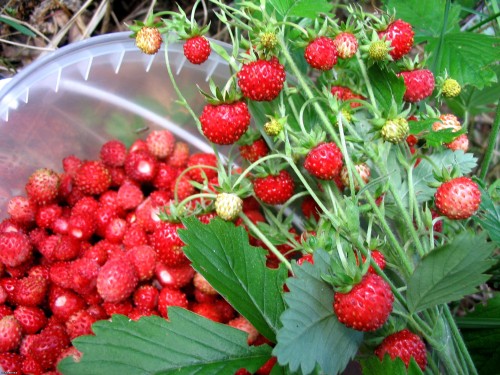
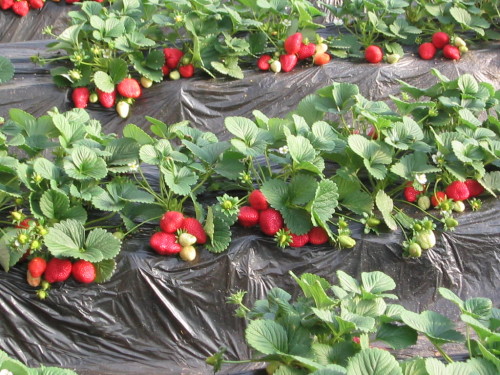
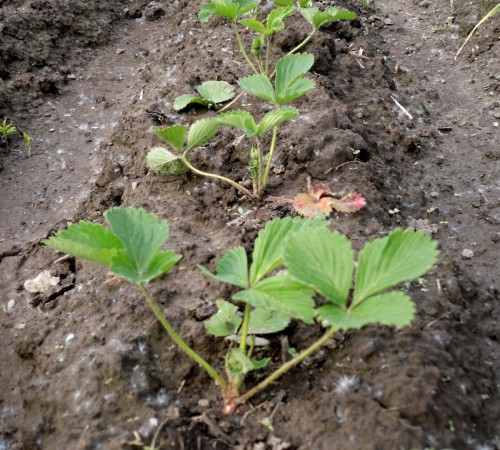
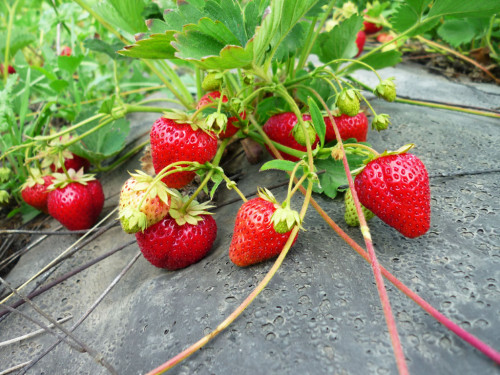
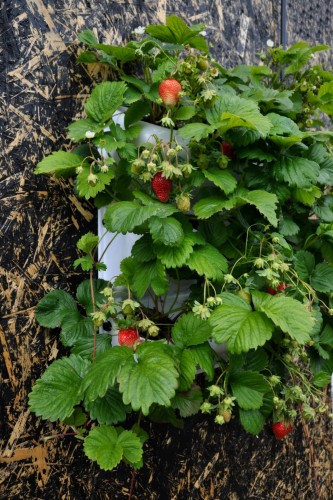

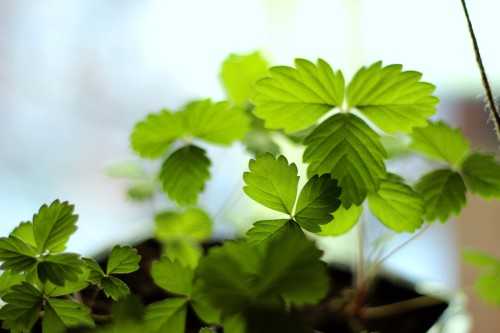
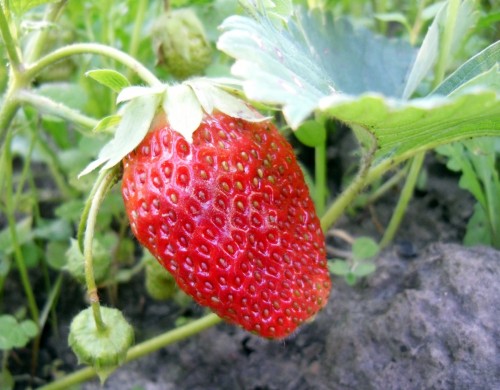
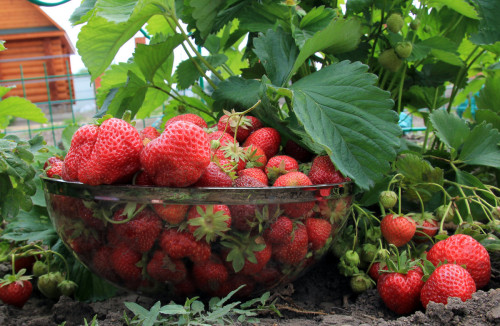
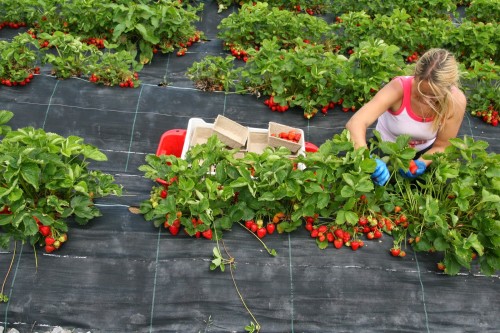
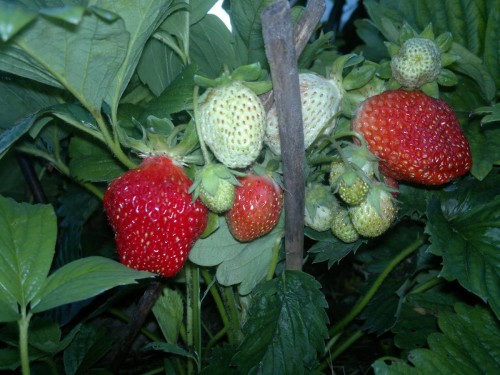
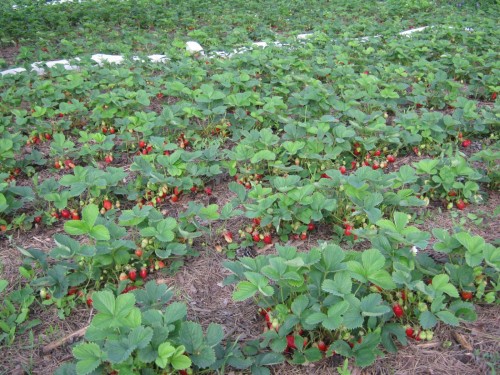












 Start a discussion ...
Start a discussion ...